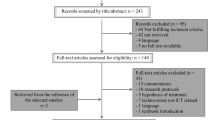Abstract
A cross-sectional investigation of psychosocial variables in 63 female employees matched for experienced pain was conducted to study the difference between back pain sufferers who were working (Copers) and those who were off work (Dysfunctional). The subjects reported moderate to severe pain often or always during the past year and were employed at the same hospital. Thirty-seven women who had not been off work for pain made up the Copers group, whereas 26 women who had been off work for their pain made up the Dysfunctional group, subjects were interviewed and completed a battery of questionnaires designed to penetrate level of dysfunction, perceived health, work and social satisfaction, perceived workload, coping strategies, and pain beliefs. Multiple covariate analyses that controlled for perceived workload, smoking, low-back mobility, and obesity revealed significant differences between the groups on levels of functioning, pain beliefs, and coping strategies used. Dysfunctional subjects had stronger beliefs that pain was directly related to activities, that they had little control over their pain, that their health was poor, and that they tended to focus more on their pain. A discriminant analysis correctly classified 83% of the subjects as to work status based on six psychosocial variables. These results not only demonstrate the importance of psychosocial factors in back pain, but underscore the fact that work absence for back pain may be controlled by psychological factors related to beliefs and coping strategies. Future research may attempt to use these factors in the screening of patients.
Similar content being viewed by others
References
Bigos, S. J., Baltie M. C., Spengler, D. M., Fisher, L. D. Fordyce, W. E., Hansson, T. H., Nachemson, A. L., & Wortley, M. D. (1991). A prospective study of work perceptions and psychosocial factors affecting the report of back injury. Spine, 16, 1–6.
Broadhead, W. E., Gehlback, S. H., DeGruy, F. V., & Kaplan, B. H. (1988).The Duke-UNC Functional Social Support Questionnaire. Medical Care, 26, 709–723.
Chapman, S. L. (1988). Chronic pain and the injured worker. In N. T. Lynch & S. V. Vasudevan (Eds.), Persistent pain (pp. 35–48). Boston: Kluwer.
De Good, D. E., & Shutty, M. S. (1992). Assessment of pain beliefs, coping, and self-efficacy. In D. C. Turk & R. Melzack (Eds.). Handbook of pain assessment (pp. 214–234). New York: Guilford.
Feuerstein, M., & Thebarge, R. W. (1991). Perceptions of disability and occupational stress as discriminators of work disability in patients with chronic pain. Journal of Occupational Rehabilitation, 1, 185–195.
Fordyce, W. E. (1976). Behavioral methods for chronic pain and illness. St. Louts: Mosby.
Frymoyer, J. W. (1992). Predicting disability from low back pain. Clinical Orthopaedics and Related Research, 279, 101–109.
Hill, A. (1993). The use of pain coping strategies by patients with phantom limb pain. Pain, 55, 347–353.
Jensen, I., & Linton, S. J. (1993). Coping Strategies Questionnaire: Reliability of the Swedish version. Scandinavian Journal of Behavior Therapy, 22, 139–145.
Jensen, M. P., & Karoly, P. (1992). Pain-specific beliefs, perceived symptom severity, and adjustment to chronic pain. Clinical Journal of Pain, 8, 123–130.
Jensen, M. P., Turner, J. A., Romano, J. M., & Karoly, P. (1991). Coping with chronic pain: A critical review of the literature. Pain, 47, 249–283.
Linton, S. J. (1994). The challenge of preventing chronic musculoskeletal pain. In G. F. Gebhart, D. L. Hammond, & T. S. Jensen (Eds.), Proceedings of the 7th World Congress on pain, progress in pain research and management. Vol. 2 (pp. 149–166). Seattle, WA: International Association for the Study of Pain.
Linton, S. J., Bradley, L, A., Jensen, I., Spangfort, E., & Sundell, L. (1989). The secondary prevention of low back pain: A controlled study with follow-up. Pain, 36, 197–207.
Main, C. J. (1983). The Modified Somatic Perception Questionnaire (MSPQ). Journal of Psychosomatic Research 1983, 27, 503–514.
Main, C. J., Wood, P. L. R., Hollis, S., Spanswick, C. C. & Waddell, G. (1992). The distress and risk assessment method: A simple patient classification to identify distress and evaluate the risk of poor outcome. Spine, 17, 42–52.
Parkcrson, G. R., Broadhead, W. E., & Tse, W. (1990). The Duke Health Profile: A 17-item measure of health and dysfunction. Medical Care, 28, 1056–1072.
Pincus, T., Summey, J. A., Soraci, S. A., Wallston, K. A., & Hummon, N. P. (1983). Assessment of patient satisfaction in activities of daily living using a modified Stanford Health Assessment Questionnaire. Arthritis and Rheumatism, 26, 1346–1353.
Riley, J. F., Ahem, D. K., & Follick, M. J. (1988). Chronic pain and functional impairment: Assessing beliefs about their relationship. Archives of Physical Medicine and Rehabilitation, 69, 579–582.
Turk, D. C. Meichcnbaum, D., & Myies, G. (1983). Pain and behavioral medicine: A cognitive-behavioral perspective. New York: Guilford.
Waddell, G., Newton, M., Henderson, I., Somerville, E., & Main, C. J. (1993). A Fear-Avoidance Beliefs Questionnaire (FABQ) and the role of rear-avoidance beliefs in chronic low back pain and disability. Pain, 52, 157–168.
Williams, D. A., & Thorn, B. E. (1989). An empirical assessment of pain beliefs. Pain, 36, 351–358.
Author information
Authors and Affiliations
Additional information
We are sincerely grateful to the Volvo Research Foundation and the Örebro County Council for financial support that made this research possible
Rights and permissions
About this article
Cite this article
Linton, S.J., Buer, N. Working despite pain: Factors associated with work attendance versus dysfunction. Int. J. Behav. Med. 2, 252–262 (1995). https://doi.org/10.1207/s15327558ijbm0203_4
Issue Date:
DOI: https://doi.org/10.1207/s15327558ijbm0203_4




